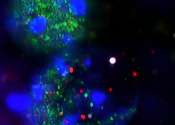Scientists solve a 100-year-old mystery about cancer
The year 2021 marks the 100th anniversary of a fundamental discovery that's taught in every biochemistry textbook. In 1921, German physician Otto Warburg observed that cancer cells harvest energy from glucose sugar in a strangely ...
Jan 22, 2021
0
661









